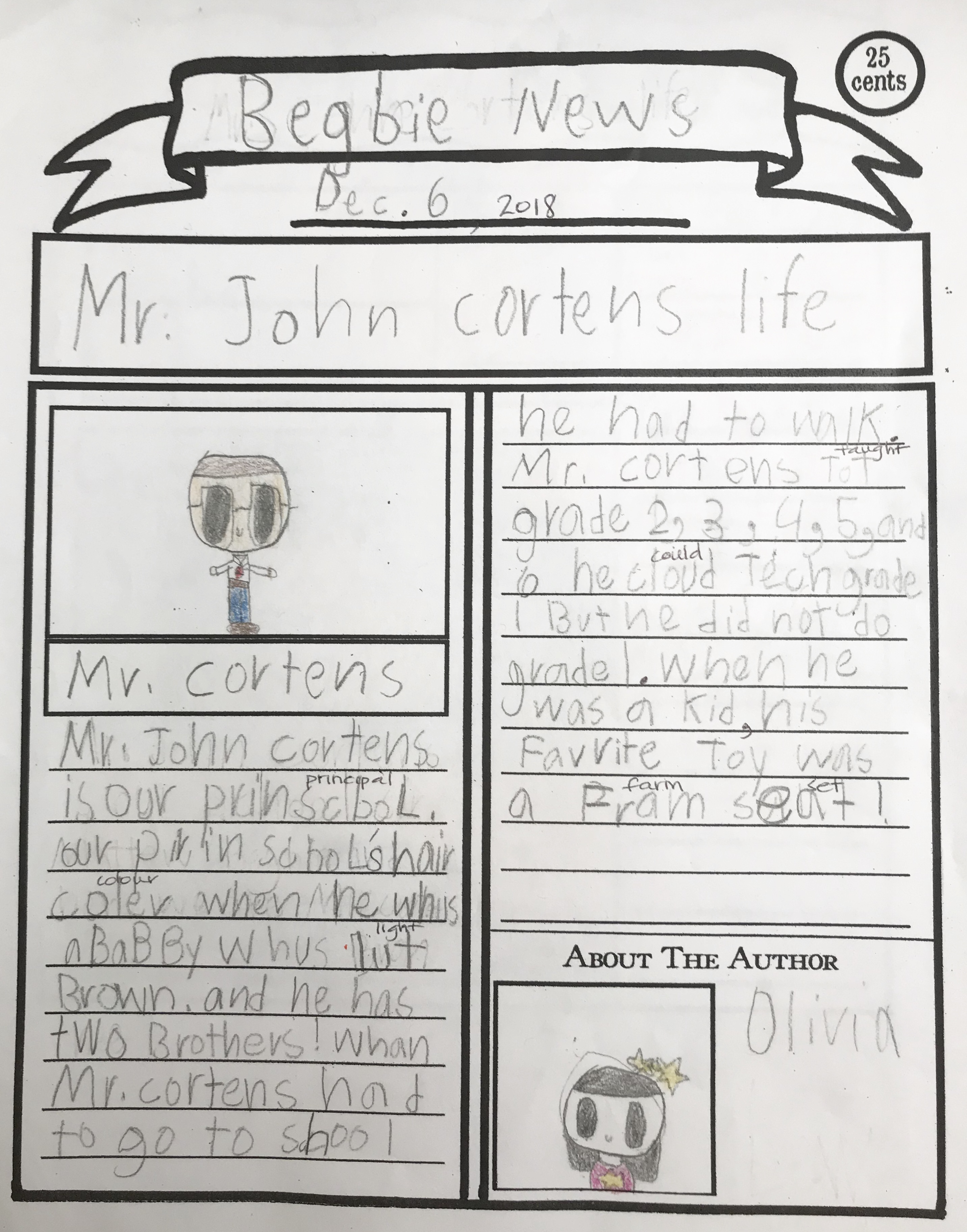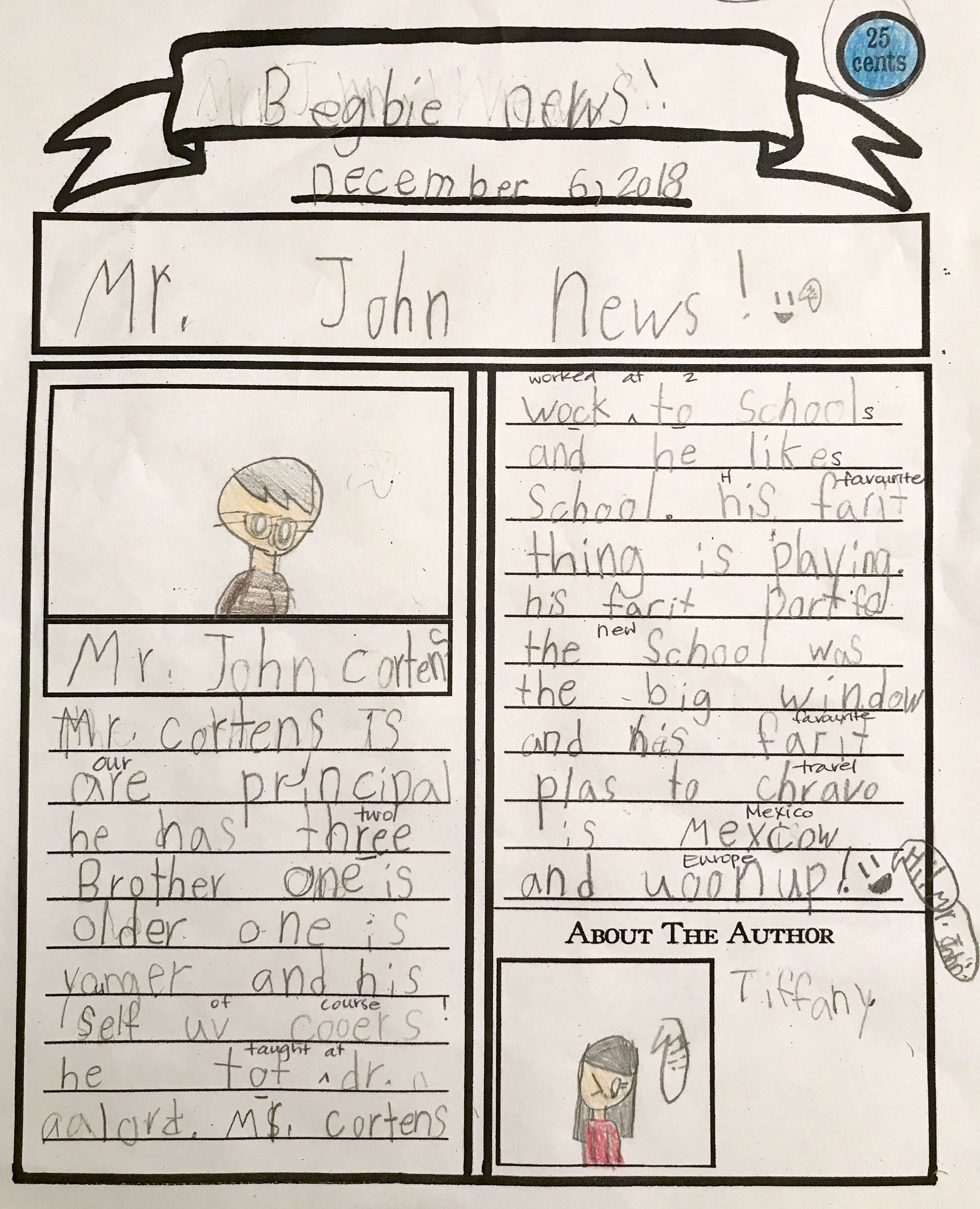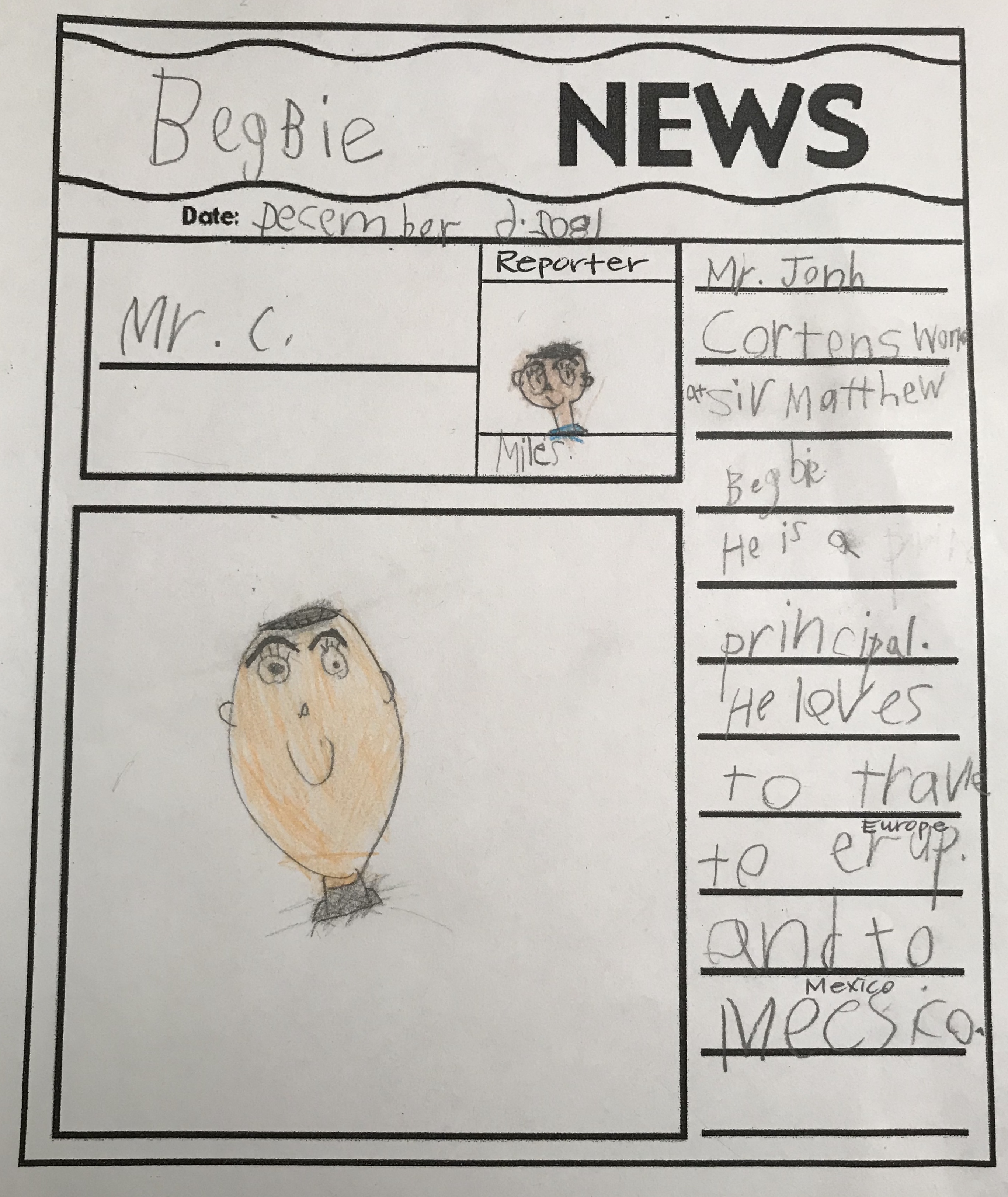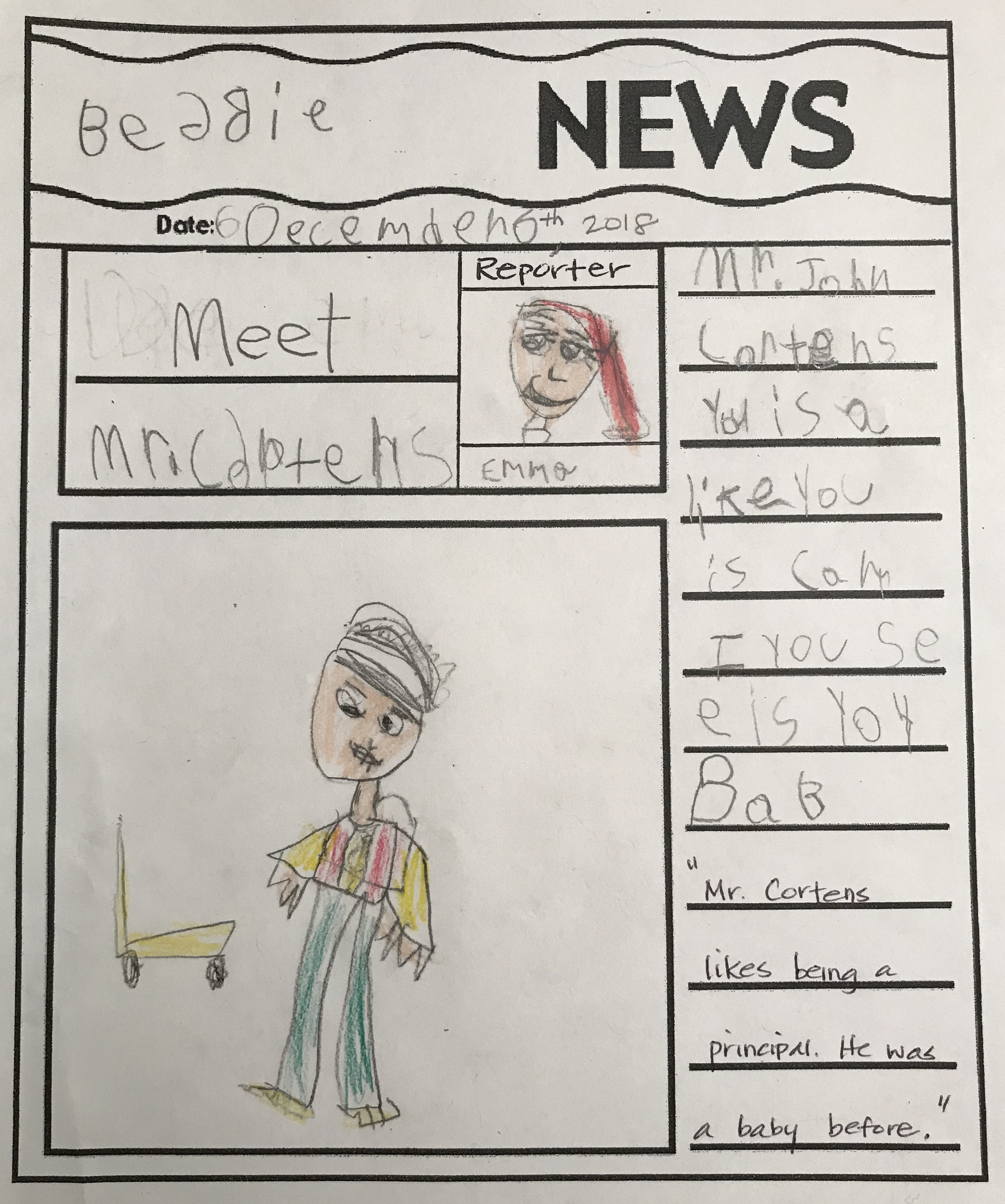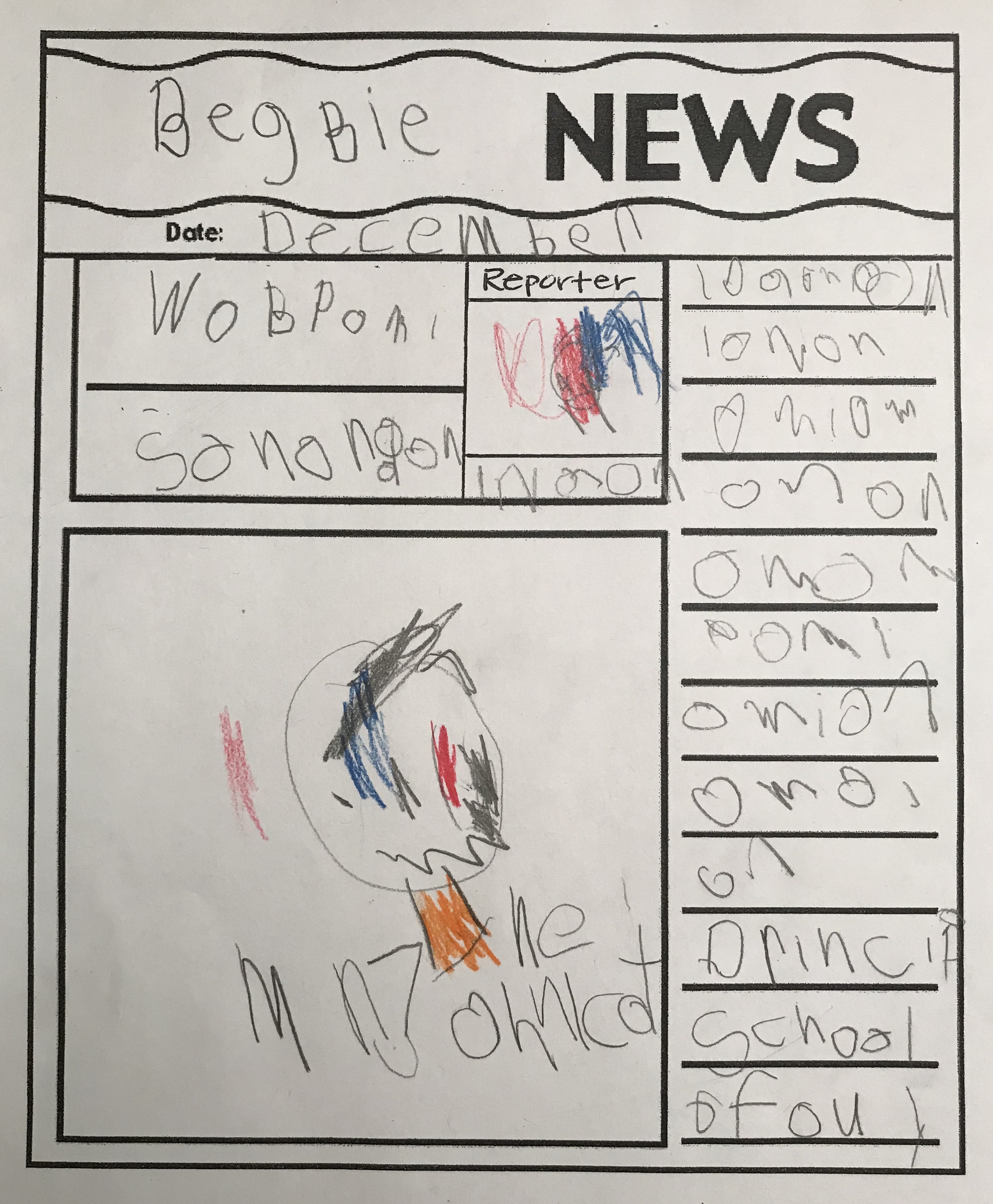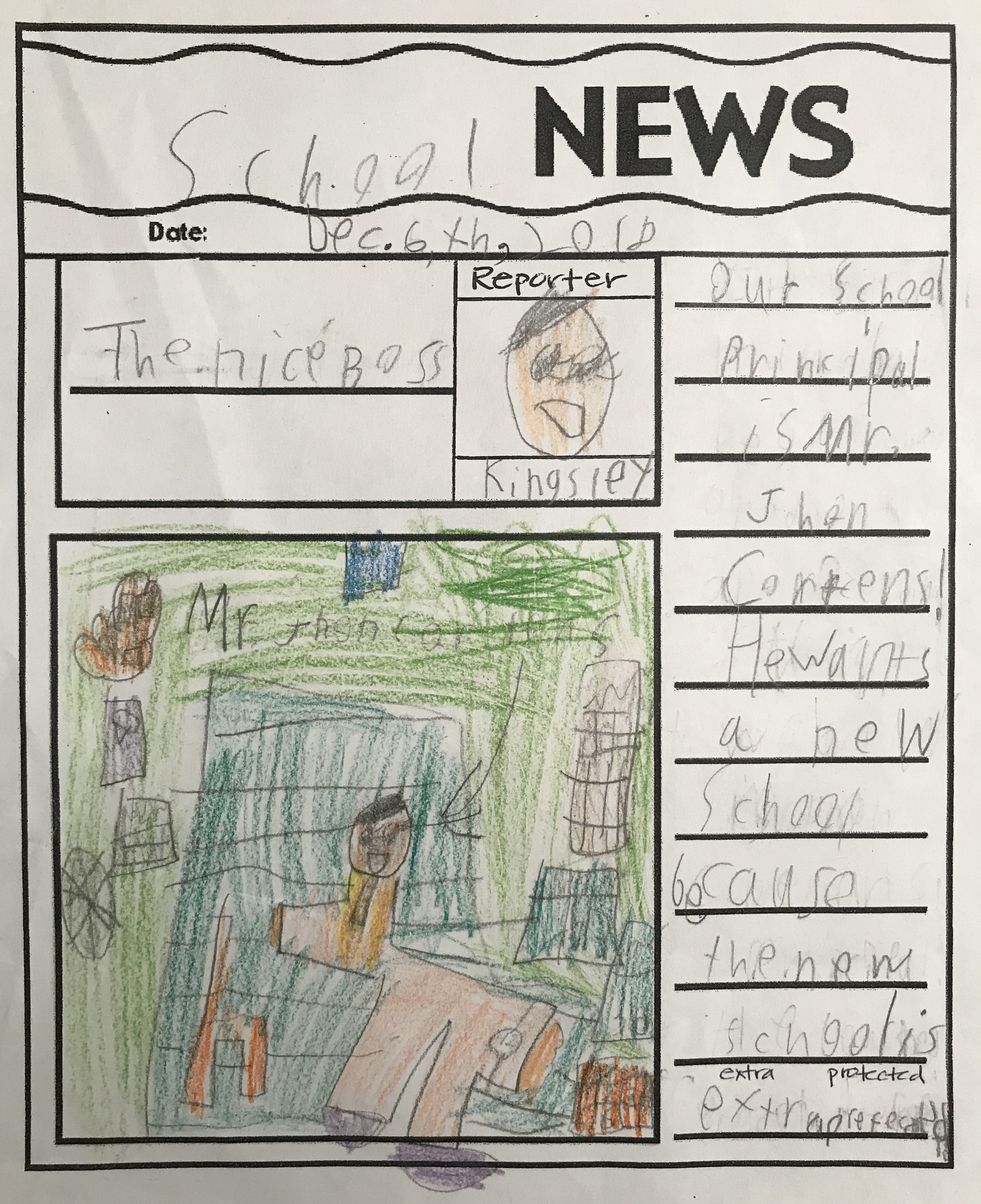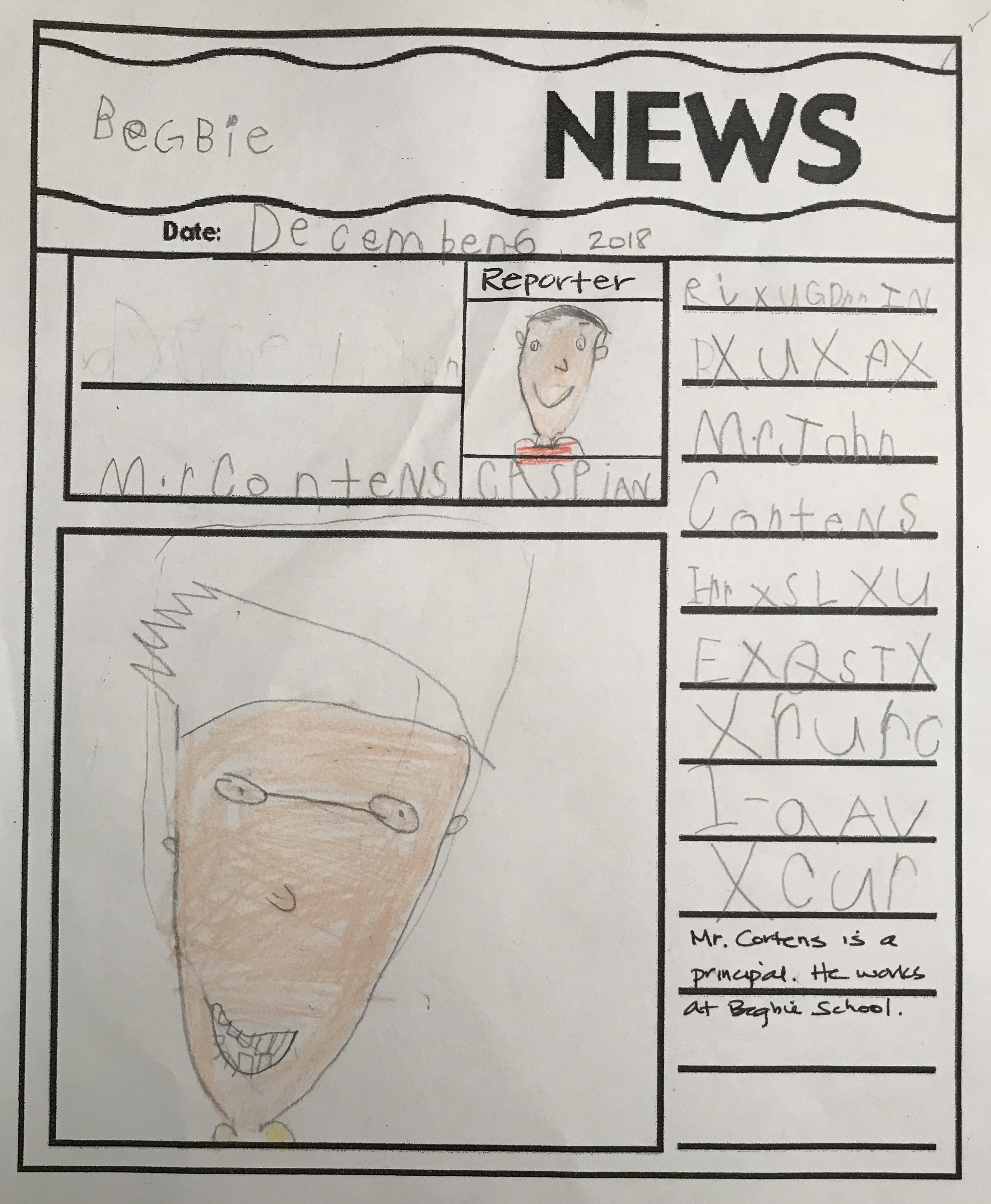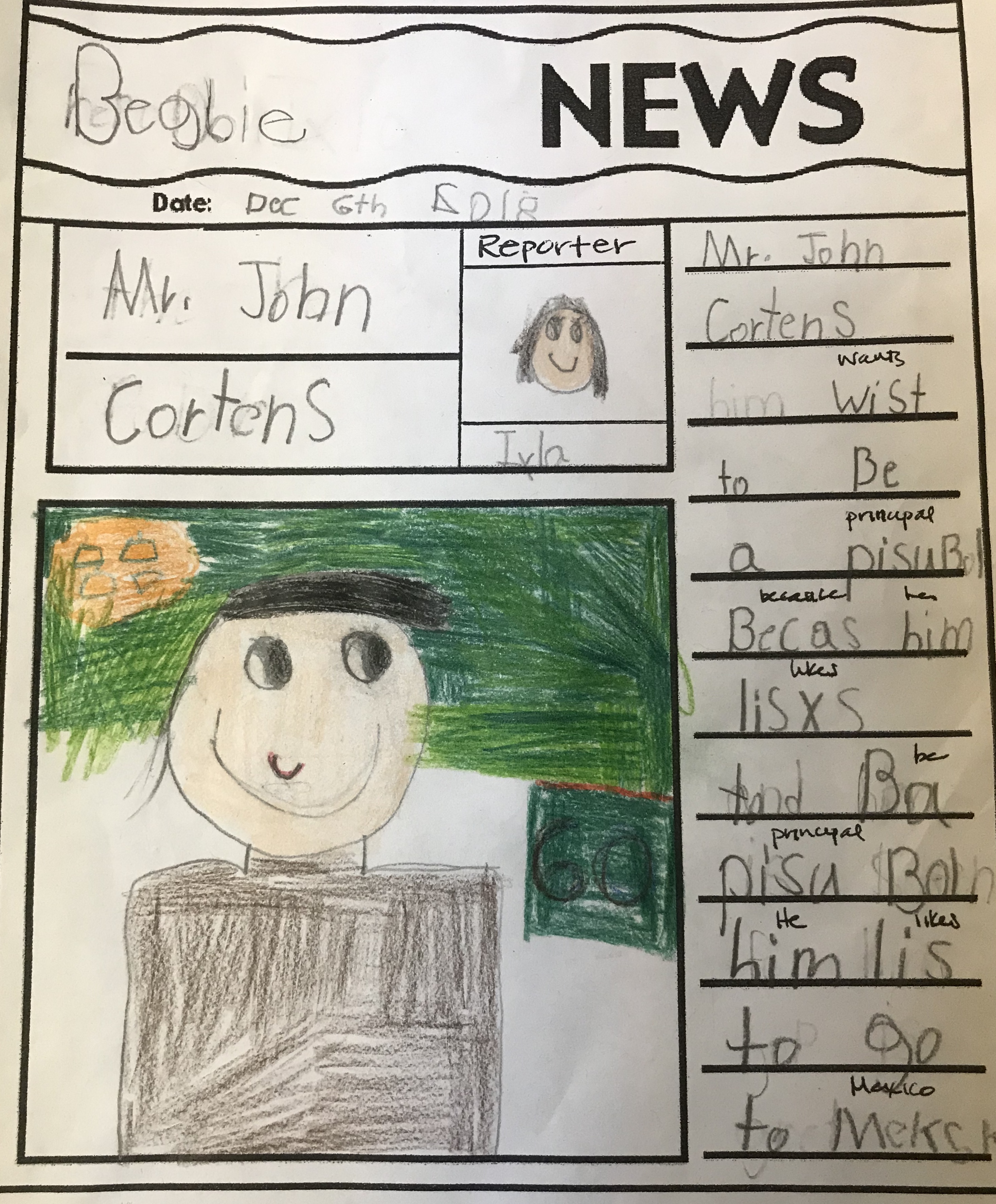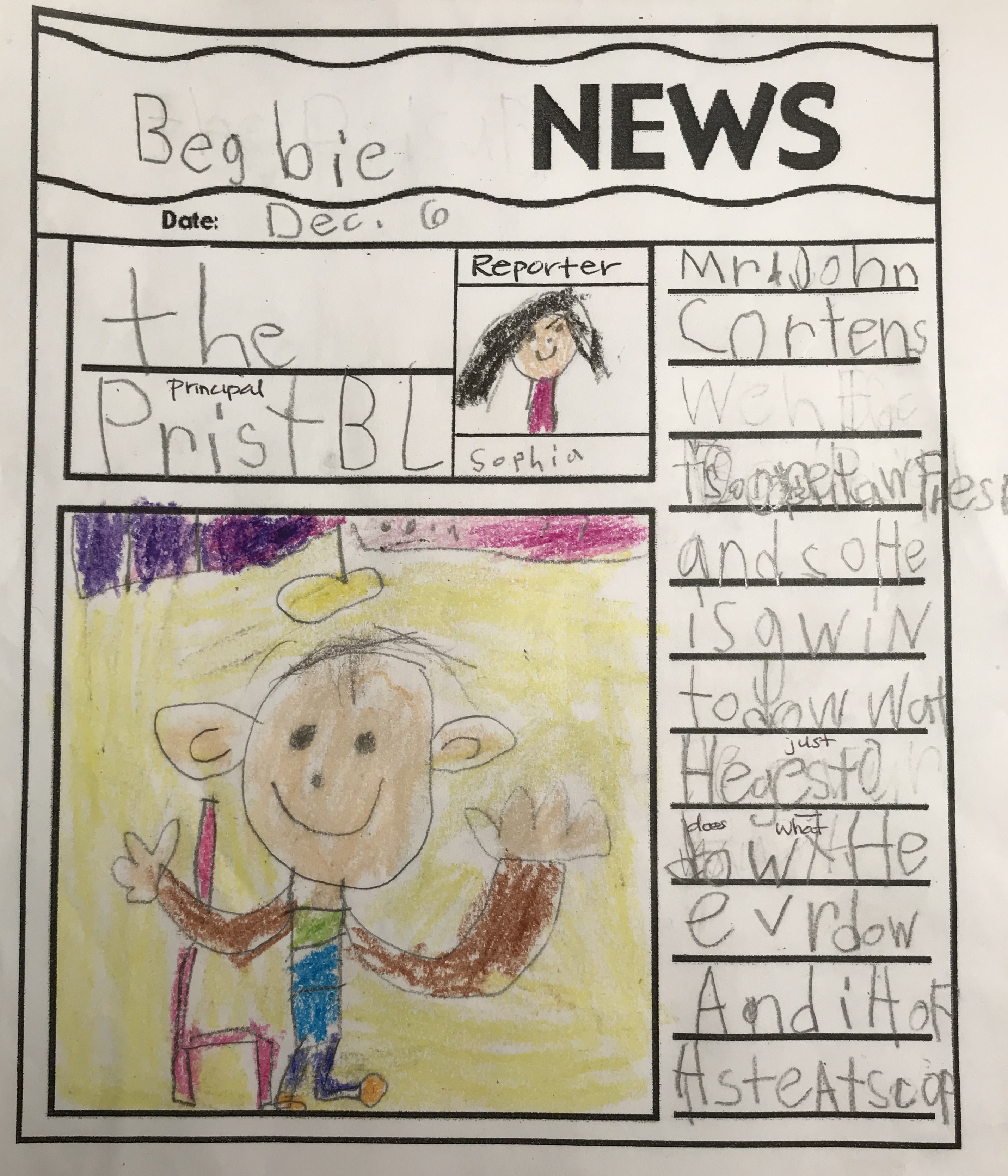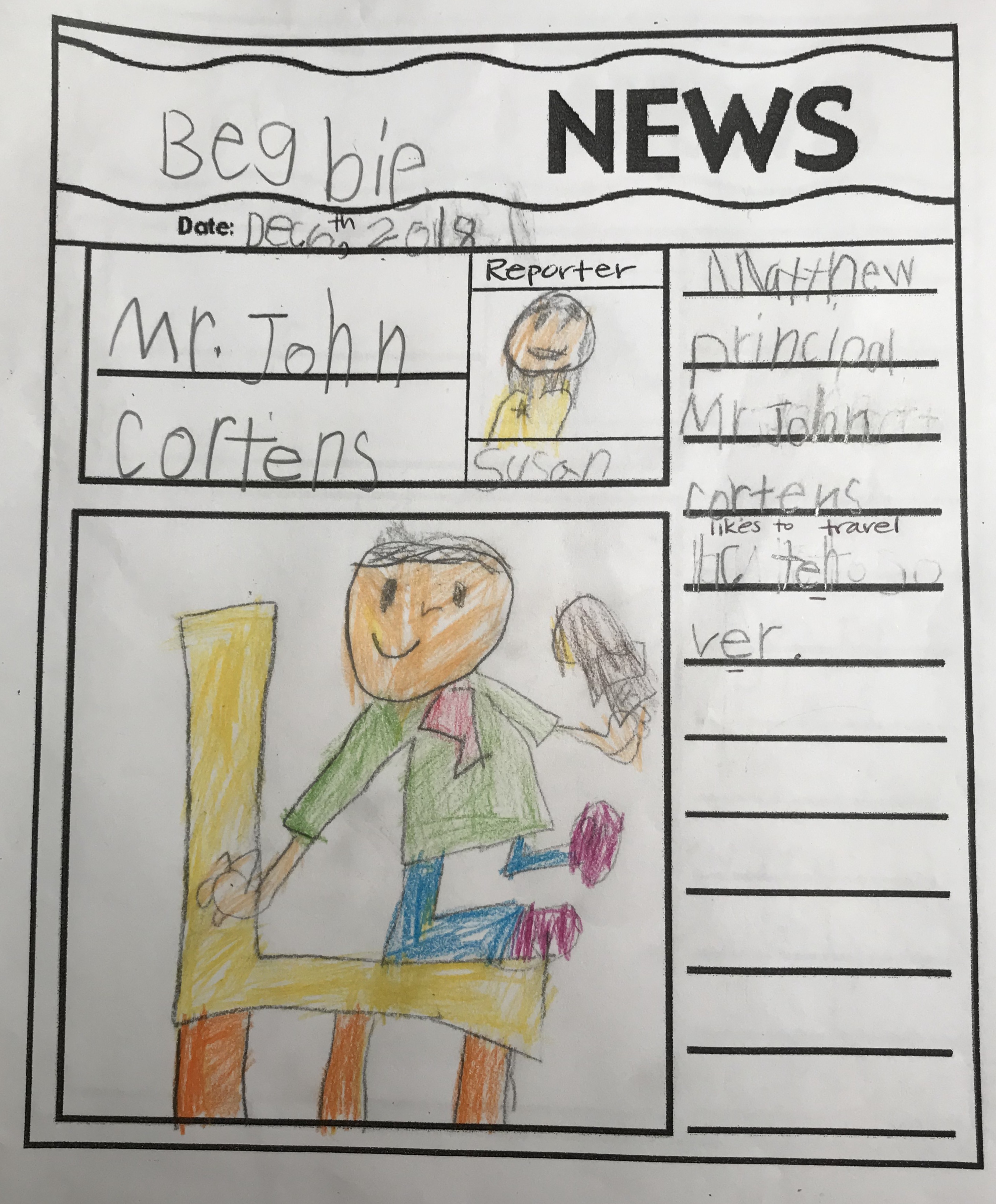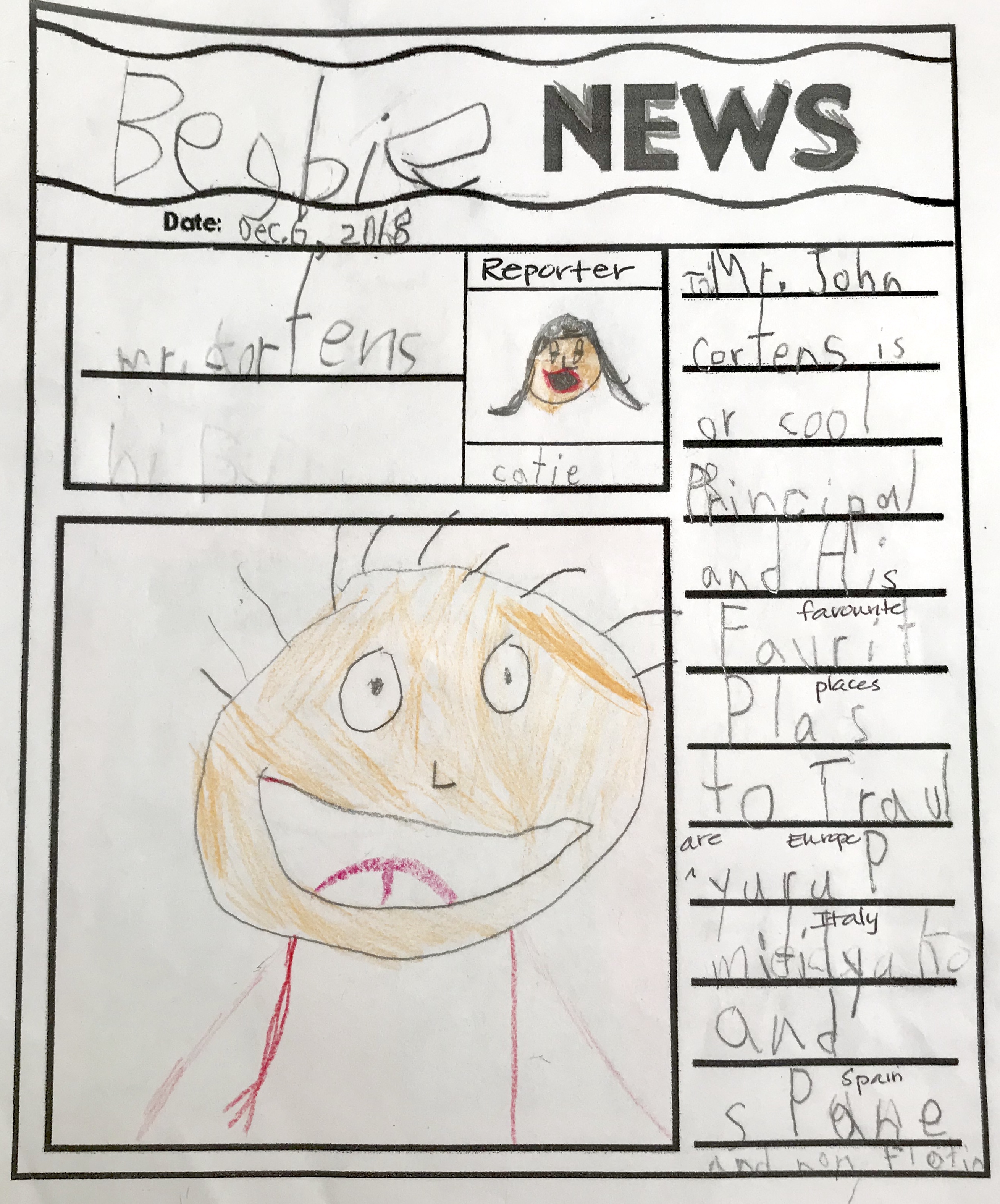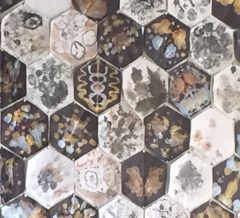CELEBRITY PROFILE
After Mr. Cortens answered all of our questions, the Junior Journalists watched (and re-watched) the recorded footage from their interviews for research purposes.
The students then all wrote their very first article.
Below every article you will find a soundbite from the reporter. Our Junior Journalists recorded their own reflections about their experience as first time reporters! They used the app called “Voice Memo” to share what they felt they were good at, and to express what they would like to work on in terms of writing future articles. The students talked about…
- being able to summarize key points
- writing a short paragraph that makes sense and is cohesive
- coming up with a catchier headline
- using interesting words in their articles
- making sure to tell readers facts about our subject
- creating a nice presentation or layout so that it catches readers’ eyes
For newspaper article templates, full credit goes to the owners of the following sites. Please click on the following links…
Enjoy reading the character profiles on Mr. Cortens, and celebrate what the students have learned from this task!

